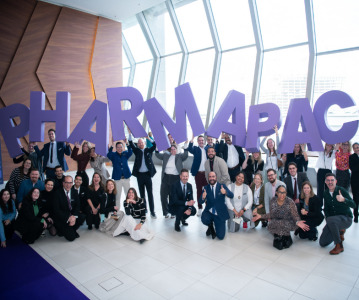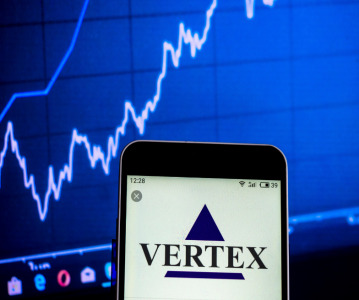Supply chain disruptions continue, but is the end in sight?

Supply chain disruptions have become the new normal. Recurring pandemic waves, inflation, trade jitters and a war in Europe have done little to quell C-suite anxieties.
Most pharma execs keeping an eye on the situation are looking for the off-ramp and a subsequent return to normal, but is this realistic? Will our supply chain troubles return to the shadows, or are we fated to endlessly fret over shortages, delays and interruptions?
For the bio/pharmaceutical industry, the stakes are even higher. Dependence on foreign key starting materials, APIs and finished dosage drugs displaced localised control over production and distribution. The last two years have highlighted this weakness in the North American and European drug industries.
Assessing recent supply chain challenges
CPHI recently spoke with LGM Pharma’s Hamilton Lenox, Curia’s Patrik Latin, and Aceto’s Patrick Bower to get their take on the current state of bio/pharma supply chains.
Hamilton Lenox, Senior Vice President Business Development & Operations at CDMO and API sourcing provider LGM Pharma, points out that supply chains continue to experience serious complications.
‘As the global economy recovers from the COVID-19 pandemic, the world is experiencing increased shortages of products and raw materials, longer lead times, disruptions in shipping, and significant cost increases,’ he says. ‘Prices are rising at the fastest pace in nearly 40 years, which translates into higher prices (and longer lead times) for drug substance and drug product services.’
According to Patrick Bower, Senior Director, Supply Chain at specialty chemical supplier Aceto, the industry’s supply chain remains very fragile.
He says: ‘Sourcing reliable, timely supplies of raw materials will remain a challenge until COVID-related logistical and production backlogs relent. While there does seem to be some easing of port backlogs and total trade inventory is starting to recover, each global event has sparked nervousness among supply chain leaders.’
Curia’s Vice-President of Global Supply Chain and Customer Service, Patrik Latin, agrees that supply chains remain challenged. ‘Over the past two to three years, we have seen various threats pounding supply chains. COVID-19 constraints were the most notable, but we also saw the Suez Canal blockage, a severe unbalancing of global container parks, and significant cold weather impacts on Texas refineries, among other more localised events,’ he says.
Latin adds that these events have impacted supply chains to greater or lesser degrees, including shortages of raw materials, solvents or other critical supplies, and significant delivery delays.
Aceto’s Bower doesn’t believe supply chains will ever return to a pre-COVID state, saying ‘We do expect an eventual exit from COVID-related impacts, but the global nature of pharma leaves the industry exposed to nearly any geopolitical or climate event that arises. For this reason, we expect there will be a new and different normal.’
Bio/pharma supply chain impacts
Drugmakers have experienced a shifting variety of supply chain impacts over the last two-plus years. When manufacturing and transportation initially ground to a halt, API and finished dosage form shortages were the dominant concern. Today we find the most significant risks and impacts to supply chains are still being felt in these same areas, including disposables.
Lenox believes supply disruption remains a significant risk to bio/pharma companies. ‘Disruptions are a big contributor to drug shortages and increasing drug costs, both ongoing problems that regulators and the pharmaceutical industry work to address on a continuous basis,’ he says.
‘Supply chain complications, unforeseen closures, regulatory shutdowns, and logistical delays affect pharmaceutical manufacturing and drug availability.’
Aceto’s Bower agrees, pointing out that the early impacts the industry felt remain the critical risk factors, including ‘finished drug manufacturers reliant on a single source for many raw materials, excipients, and APIs.’ This is driven by an industry that ‘has far less intra-regional trade than other industries. Only 40% of pharma products are sourced in-region, which exposes the pharma supply chain to the full-on whims of the global logistics network.’
Recent growth in biologics was causing constraints on single use supplies before the pandemic, which in turn worsened the situation. Regarding disposables, Latin says: ‘Currently, we are seeing global shortages of filters, which are needed in all kinds of manufacturing technologies, as well as rubber stoppers which can potentially impact the supply of sterile products.’
How the war in Ukraine slows supply chains
Any mention of supply chain challenges over the last few years has resulted in the identification of COVID-19 as the chief culprit. But the pandemic, while having a substantial impact, was joined by other factors in a perfect supply chain storm. These other dynamics included a shrinking U.S. workforce, ongoing trade tensions with China, and (more recently) what has been happening in Ukraine.
While the war in Ukraine may be unlikely to cause a direct impact on drug supplies, there are ancillary effects. Hundreds of clinical trials in Ukraine have been disrupted, while semiconductor manufacturers – highly dependent on Ukraine for neon and other gases essential to manufacturing – are expecting an impact on chip production. This scarcity may well cause product shortages that more directly impact life science companies. Think analytical instrumentation, for example.
Lenox believes the ongoing crisis in Ukraine may exacerbate existing supply chain challenges, creating ‘additional long-term supply chain disruptions that could affect the U.S. and global pharmaceutical markets, including potential delays due to closed airspace, price hikes, diminished air cargo capacity, or delays in clinical trials conducted in Ukraine.’
Latin concurs. ‘The Ukraine conflict currently is less of a direct supply-chain concern for pharma, but it is leading to increased costs for certain supplies.’
High turnover impacting bio/pharma projects
On the workforce front, LGM Pharma’s Hamilton Lenox shares how ‘recruiting and employee retention continues to be challenging, with intense competition for good candidates. The tight labour market also leads to higher salaries and benefits – further driving up costs.’
Increased staff turnover is also presenting issues with continuity on drug development projects and can result in project delays or poor communication.
According to Latin, changes in the workforce environment are causing companies to adapt workplace practices. ‘We’re seeing a more intense focus on recruitment, retention, and training,’ he says.
Building inventory, multi-sourcing become go-to strategies
Even with a forced rethink of struggling supply chains, reshoring has taken a back seat to other risk mitigation strategies. Bower reports that a recent study found building inventory throughout the supply chain is the current risk mitigation path of choice. ‘We believe this assessment to be accurate—even if it is only a temporary “hack”—to improve reliability and negate variability.’
But Bower cautions that longer-term solutions will include reshoring and nearshoring. ‘Reshoring has been temporarily relegated to the back burner for many reasons, including the challenges associated with finding suppliers, and the long lead times required to qualify suppliers for pharma applications,’ he says. Latin believes this will change as more suppliers add manufacturing capacity and stocking points at strategic locations in North America, Europe and Asia.
Lennox adds that the ‘adoption of multi-source strategies and geographically diverse supply chains means a company can ensure continuity of supply if an unforeseen issue occurs in the country of origin.’
Bower also feels that regionalising and multi-sourcing the supply line will improve resilience and mitigate risk. But he points out that other aspects of supply chain management also play a critical role.
‘Consider better planning, better demand sensing, and more transparency and visibility within supply lines. There is a case to be made that differentiated inventory strategies will make a difference. And considering the implications of global warming/climate change, it would be wise to harden physical assets to better secure capacity.’
What are we not seeing anymore? Just in Time planning.
According to Lenox, ‘many organizations have recognized that “Just in Time” planning is not a workable strategy when facing multiple, concurrent supply chain challenges. Most have now adopted different approaches, such as increasing safety stocks, adding secondary and tertiary suppliers for all key raw materials and components, or requesting suppliers carry larger safety stock of starting materials or intermediates.’
Latin adds that best-in-class suppliers have shifted to forward-looking strategies allowing fast adaptation to rapidly changing environments. ‘Curia is a great example. We already had a dual or multiple-sourcing, geographically diverse strategy in place for strategic supplies. This allowed us to be responsive and adapt quickly.’
Bower points to some of the traits in common among industry leaders who have been most effective throughout the COVID crisis, including transparent communications with customers; retention of key personnel during the ‘Great Resignation’; an ongoing training and improvement focus; well-developed and mature logistical processes and expertise; and constant evaluation and improvement.
Supply chain management to remain a high priority
Supply chains have a more prominent presence in operations and have gained strategic importance. According to Bower, ‘supply chain is transitioning in importance from being a “service organisation” to a strategic asset. Everything categorized as supply chain is being elevated within organisations—from headcount allocations to training and technology spend to board-level risk committees. It’s clear we now have a seat at the adult table.’
Latin also sees an expanded role in the pharma industry for supply chain management. ‘I believe that the relevance and importance of a robust and proactive SC function has put the capability on the map. It has become clear that proper planning, a solid strategy and forward-thinking is a mandate.’
Lenox agrees, emphasizing the public’s awareness of the fragility of the industry’s dependence on foreign sources. ‘COVID changed the public perception of pharma supply chains. The public is paying more attention to pharmaceutical and biotech drug development than ever before. The media’s intense focus on the fact that 75-80% of generic drugs are not produced in the U.S. was a wake-up call for many U.S. citizens – and U.S. politicians.’
Given the assortment of cataclysms walloping supply chains over the last few years, supply chain prognosticators have grown wary of venturing too far ahead. But one thing is clear - increasing awareness of the stressors and risks to bio/pharma supply chains has set the industry on the path to a more strategic, cautious, and redundant approach to supply chain operations.
Related News
-
News A Day in the Life of Oncology Start-Up Co-Founder & CEO
This Women's month we are highlighting stories of women in the pharma industry (building on what we do every month to support women), so for the Day in the Life of we are speaking to Sharon Cunningham who is the Co-founder and CEO of Shorla On... -
News Women in Pharma: Manufacturing personal and team success
Our monthly Women in Pharma series highlights the influential lives and works of impactful women working across the pharmaceutical industry, and how the industry can work towards making the healthcare industry and workplace more equitable and inclusive... -
News A Day in the Life of a Head of Market Insights in med devices
The latest interview in the Day in the Life of Series is with Alper Hulusi, Head of Market Insights for ClariMed. Hulusi also works to try to get to know people, this time from the other side of pharma – the people that will be using the the... -
News CPHI Podcast Series: Packaging expert perspectives at Pharmapack 2025
This month's podcast episode sounds a little different, covering the latest event in Paris – Pharmapack 2025. Digital Editor Lucy Chard speaks to several experts direct from the floor of the show, bringing you right in on the action.&nbs... -
News Vertex Pharmaceuticals stock jumps as FDA approves non-opioid painkiller
UK-based Vertex Pharmaceuticals saw their stock shares soar as the US FDA signed off on the non-opioid painkiller Journavx, also known as suzetrigine, for patients with moderate to severe acute pain, caused by surgery, accidents, or injuries. -
News The 2025 Pharmapack Awards: recognising innovation and patient centricity
This year in Paris the Pharmapack Awards recognised the achievements across categories in the industry, aswell as including some new categories to highlight exceptional work and people. -
News Pharmapack 2025: From the Floor in Paris
Pharmpack gears up for another week in Paris at the Porte De Versailles. The two-day show taking place on the 22–23 January, will cover contract packaging, device innovation, and sustainability among other topics. -
News Visibility, Integration, and Opportunity with CPOs: A Pharmapack Interview
At Pharmapack 2025 in Paris the informative content tracks this year will feature a Contract Packaging track. A critically important topic for those working in the field, which speaker Alexander Schäfer from Sharp Services discusses in the fo...
Position your company at the heart of the global Pharma industry with a CPHI Online membership
-
Your products and solutions visible to thousands of visitors within the largest Pharma marketplace
-
Generate high-quality, engaged leads for your business, all year round
-
Promote your business as the industry’s thought-leader by hosting your reports, brochures and videos within your profile
-
Your company’s profile boosted at all participating CPHI events
-
An easy-to-use platform with a detailed dashboard showing your leads and performance







